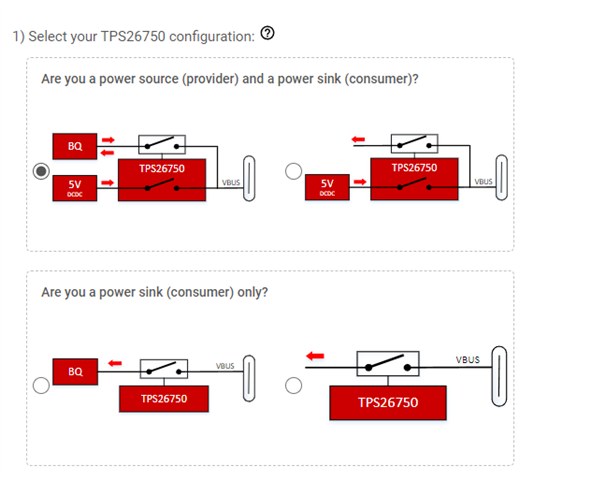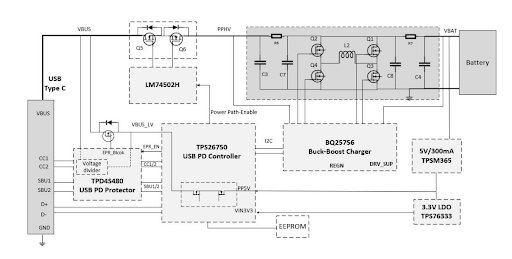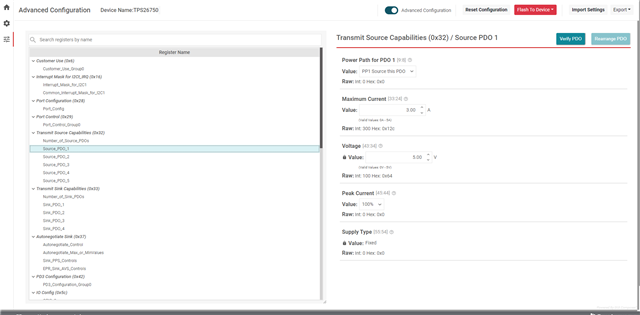Other Parts Discussed in Thread: PMP41115, , TPS26750, TPS25750
Tool/software:
Hello TI Team,
System description:
- Design based on PMP41115 (USB-C PD3.1, up to 240 W), combining BQ25756 (buck-boost bidirectional charger) and TPS26750 (eFuse/ERP power path).
- PD controller configured with USBCPD Application Customization Tool, image loaded to external EEPROM.
- Goal: when the BQ25756 enters Reverse/OTG mode, the VREV_ACC (reverse adapter voltage) should be set above the default 5 V, for example 24 V (or according to the PD contract).
Current behavior:
- With battery input (~33 V), the BQ25756 Reverse Mode does activate.
Questions:
- Which parameter in the USBCPD Application Customization Tool should be changed so that the BQ25756 targets a reverse voltage >5 V (e.g. 24 V)? In the datasheet this seems to correspond to the VAC_REV register of the BQ25756.
Hardware / test conditions:
- Battery input: ~33 V.
- Reverse mode confirmed active.
- TPS25750 boots from EEPROM with an image generated by the Tool.
- I will attach screenshots of my basic configuration.
For your reference, I am attaching:
- The configuration exported from USBCPD_Application_Customization_Tool v1.1.0
Thank you in advance for your support.










